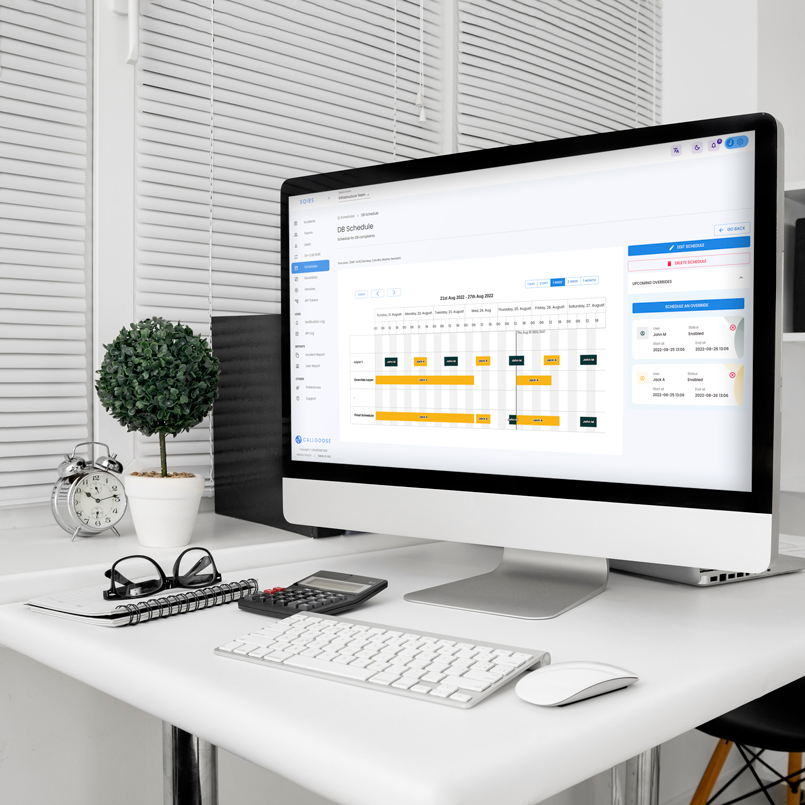Getting Started
Special
SINGLE SIGN-ON
Teams
Users
Escalation Policies
Service
Incident
Request
On-Call Shift
Schedules
Schedule Override
Logs
API
Webhook
Apps Integration
Reports
Preference
Profile
Automation
Self-Service Portal
FAQ
PowerShell Action
This document provides step-by-step instructions for creating and configuring an action using the PowerShell action type in Callgoose SQIBS automation platform. The PowerShell action type allows users to execute PowerShell scripts for automation workflows. Below are the configuration options and their descriptions:
Creating an Action Using Action Type: PowerShell
1. Navigate to Add Action
- Access the automation section in the Callgoose SQIBS automation platform.
- Go to Automation, and you can see Action.
- Click on Action and then click on Add Actions to create a new action.
2. Select Action Type
Choose PowerShell as the action type from the list of available options.
3. Copy from Existing Actions
You can copy an existing action and edit later on.
- Copy From:
- Click on Copy From to copy an existing action.
- You can copy actions from:
- Callgoose Actions: Predefined task-based scripts and programs available free of charge.
- Team Actions: Actions shared within your team.
- Global Actions: Actions available globally across the platform.
- Callgoose Actions provide several task-based scripts and programs that you can use and modify according to your requirements.
4. Fill in the Details
- Name*:
Provide a descriptive name for the action.
- Example: Check Disk Space.
- Description*:
Add a detailed description of what the action does.
- Example: This action runs a PowerShell script to check available disk space on a Windows server.
- Version*:
Select the required PowerShell version.
- Example: 7.4.5.
- Have Argument:
Choose whether the action requires arguments.
- Yes: Enables input fields to define arguments for the script.
- No: Indicates that no arguments are required.
- Git or Callgoose?*
Specify where the Action files are located.
- Git: The files are stored within the Git repository. You'll need to provide the necessary credentials to access it. Go here to view more details about how to configure Git.
- Callgoose Platform: The files will be stored on the Callgoose Platform.
If you choose Git, then set up git properly and use valid Git Entry File.
- Success Exit Code*:
Define the expected output when the script runs successfully. The success response is similar to the exit status in Linux.
- Example: 0 exit status indicates the script or command executed successfully.
- Expected Run Time (in Minutes)*:
Specify the estimated time for the execution.
- Example: 5 (indicating 5 minutes).
- PowerShell File*:
Upload the PowerShell script file to be executed.
- Click on File Upload and select the script from your local system.
- Click on Save to finalize the action.
Additional Notes
- Fields marked with an asterisk (*) are mandatory.
- Ensure the PowerShell script is tested locally before configuring the action to avoid runtime errors.
- Use descriptive names and success responses to make it easier for team members to understand the action.
- The "Expected Run Time" should be realistic to help with workflow monitoring and optimization.
Example Configuration
Name: Check Disk Space
Description: This action runs a PowerShell script to check available disk space on a Windows server.
Version: 7.4.5
Have Argument: No
Git or Callgoose?: Callgoose Platform
Success Exit Code: 0 (indicating the script executed successfully).
Expected Run Time (in Minutes): 10
PowerShell File: Upload a file named CheckDiskSpace.ps1
Conclusion
By following these steps, you can effectively configure and execute a PowerShell action in Callgoose SQIBS automation platform. This capability enhances the automation of Windows server tasks and simplifies workflow management.

